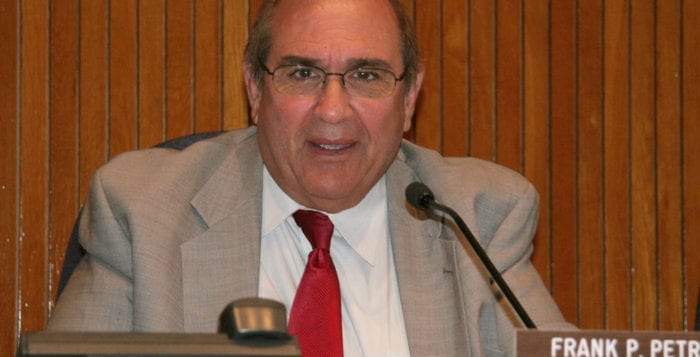By David Dunaief, M.D.

Medicine has made great strides in the treatment of multiple sclerosis over the last few decades. Multiple sclerosis (MS) is an autoimmune disease where there is underlying inflammation and the immune system attacks its own tissue. This causes demyelination, or breakdown of the myelin sheath, a protective covering on the nerves in the central nervous system (CNS). The result is a number of debilitating effects, such as cognitive impairment, numbness and weakness in the limbs, fatigue, memory problems, inflammation of the optic nerve causing vision loss and eye pain (optic neuritis) and mobility difficulties.
There are several forms of MS. The two most common are relapsing-remitting and primary-progressive. Relapsing-remitting has intermittent flare-ups and occurs about 85 to 90 percent of the time. Primary-progressive (steady) occurs about 10 percent of the time. Relapsing-remitting may eventually become secondary-progressive MS, which is much harder to control, although dietary factors may play a role.
Diagnosis and progression
MS is diagnosed in several ways. The ophthalmologist may be the first to diagnose the disease with a retinal exam (looking at the back of the eye). If you have eye pain or sudden vision loss in one eye, it is important to see your ophthalmologist. Another tool in diagnosis is an MRI of the CNS. This looks for lesions caused by the breakdown of the myelin sheath. The MRI can also be used to determine the risk of progression from a solitary CNS lesion to a full-blown MS diagnosis. This is accomplished by examining the corpus callosum, a structure deep within the brain, according to a presentation at the European Neurologic Society (1). Approximately half of patients with one isolated lesion will progress to clinically definite MS within six years. An MRI may be able to predict changes in this portion of the brain within two years. Patients with a family history of MS should discuss this diagnostic with a neurologist.
Medication
Interferon beta is the mainstay of treatment for MS for good reason. Data shows that it reduces recurrence in relapsing-remitting MS and also the number of brain lesions.However, in a study, interferon beta failed to stop the progression to disability in the long term (2). Many MS patients will experience disability over 20 years. Ultimately, what does this mean? Patients should continue therapy; however, they should have realistic expectations. This study was retrospective, looking back at previously collected data — not the strongest of studies.
In an RCT, higher levels of vitamin D in the blood showed a trend toward reduced disability in timed tandem walking and in disability accumulation.
Vitamin D impact
Vitamin D may play a key role in reducing flare-ups in relapsing-remitting MS. There have been several studies that showed this benefit with vitamin D supplements and/or with interferon beta. In one study, interferon beta had very interesting results showing that it may help increase the absorption of vitamin D from the sun (3). This was a randomized controlled trial (RCT), the gold standard of studies, involving 178 patients. The study’s authors suggest that interferon beta’s effectiveness at reducing the frequency of relapsing-remitting MS flare-ups may have to do with its effect on the metabolizing of vitamin D. In those who did not have higher blood levels of vitamin D, interferon beta actually increased the risk of flare-ups.
Physicians should monitor blood levels of vitamin D to make sure they are adequate. It may be beneficial for MS patients to get 15 to 20 minutes of sun exposure without sunscreen per day. However, patients with a history of high risk of skin cancer should not be in the sun without protective clothing and sunscreen.
In a prospective (forward-looking) observational study, patients with higher levels of vitamin D, even in those without interferon beta treatment, had reduced risk of relapsing-remitting MS flare-ups (4). The patients with higher levels had 40 ng/ml, and those with lower levels had 20 ng/ml. Patients’ blood samples were assessed every eight weeks for a mean duration of 1.7 years. The relationship with vitamin D was linear — as the blood level increased two-fold, the risk of flare-ups decreased by 27 percent.
In an RCT, higher levels of vitamin D in the blood showed a trend toward reduced disability in timed tandem walking and in disability accumulation (5). The results did not reach statistical significance, but approached it. A much larger RCT needs to be performed to test for significance.
Diet and lifestyle
Interestingly, a study found that caffeine, alcohol and fish — fatty or lean — intake may result in delay of secondary progression of relapsing-remitting MS (6). This observational study involved 1,372 patients. The reduction in risk of disability was as follows: Moderate daily alcohol intake resulted in a 39 percent reduction; daily coffee consumption showed a 40 percent reduction; and fish two or more times a week showed a 40 percent reduction.
All of these results were compared to patients who did not consume these items. However, the same effect was not shown in primary-progressive MS patients: Fatty fish actually increased risk of progression, compared to lean fish. With MS, vitamin D blood levels may be critically important. They are one of the easier fixes, although it may take higher doses of vitamin D supplementation to reach sufficient levels, once low.
While food (fish with bones, for example) provides vitamin D, it falls short of the amount needed by an MS patient. Interferon beta and vitamin D supplementation may have added effects. Lifestyle changes or additions also have tantalizingly appealing possibilities.
References: (1) Abstract O-293; June 2012. (2) JAMA. 2012;308:247-256. (3) Neurology. 2012;79:208-210. (4) Neurology. 2012;79:254-260. (5) J Neurol Neurosurg Psychiatry. 2012;83(5):565-571. (6) Eur J Neurol. 2012 Apr;19(4):616-624.
Dr. Dunaief is a speaker, author and local lifestyle medicine physician focusing on the integration of medicine, nutrition, fitness and stress management. For further information, visit www.medicalcompassmd.com or consult your personal physician.



















